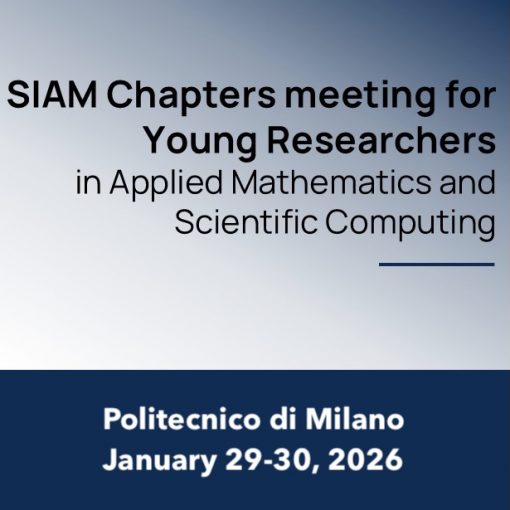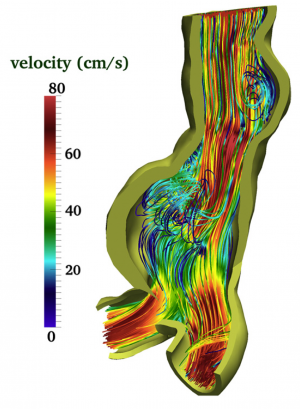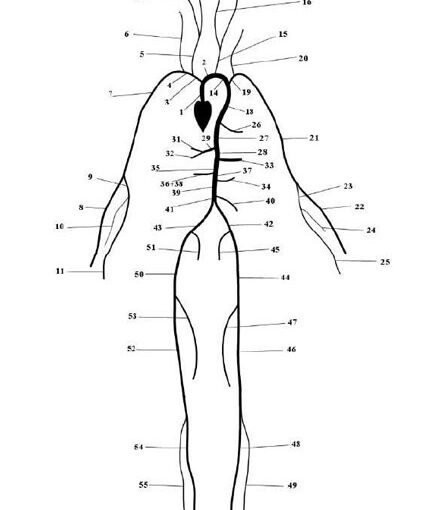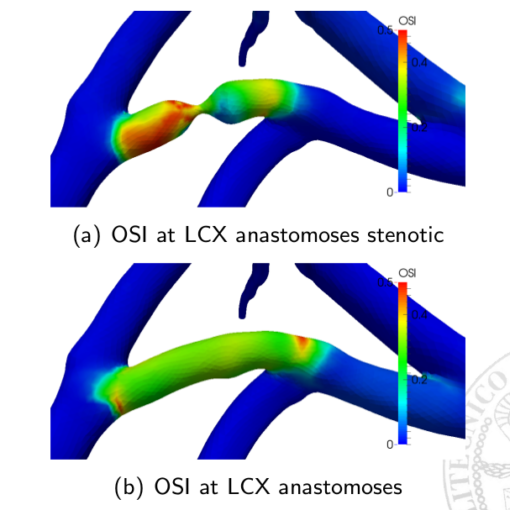The carotid bifurcation is one of the preferential site of plaque formation, leading to vessel stenosis, and, possibly, to a complete obstruction of the vessel, formation of blood clots and breakage with embolization of fragments into the brain tissue. For these reasons, carotid endarterectomy (CEA), consisting in the surgical removal of the plaque, is intensively used in the clinical practice.
The research focused on the sensitivity of the solution on different boundary conditions applied in the context of the geometrical multiscale approach.
Another topic is the study of the effect of CEA on the fluid-dynamics at the bifurcation. To this aim a computational study in real geometries acquired both before and after CEA has been performed.
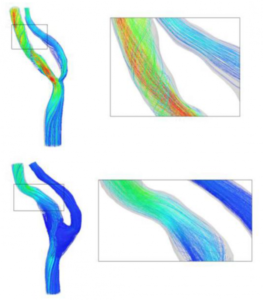
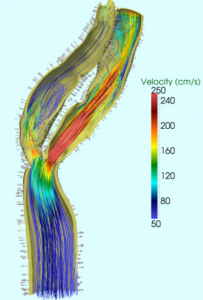
Publications:
- R. Balossino, G. Pennati, F. Migliavacca, L. Formaggia, A. Veneziani, M. Tuveri, and G. Dubini. Computational models to predict stenosis growth in carotid arteries: Which is the role of boundary conditions? Comp. Meth. Biomech. Biomed. Engng., 12(1), pp. 113–123, 2009
- Guerciotti B., Vergara C., Azzimonti L., Forzenigo L., Buora A., Biondetti P., Domanin M., Computational study of the uid-dynamics in carotids before and after endarterectomy. Journal of Biomechanics, 49(1), pp. 26–38, 2016.
- Domanin M., Buora A., Scardulla F., Guerciotti B., Forzenigo L., Biondetti P., Vergara C., Computational fluid-dynamic analysis of carotid bifurcations after endarterectomy: closure with patch graft versus direct suture. MOX Report n. 1/2016
Thesis
- M. Pozzoli – Efficient partitioned algorithms for the solution of fluid-structure interaction problems in haemodynamics – Ph.D. thesis in Mthematical Engineeing – MOX, Dipartimento di Matematica, Politecnico di Milano – 2012. Advisors: F. Nobile and C. Vergara
- B. Guerciotti – Computational comparison of haemodynamics in carotid arteries before and after endarterectomy, MSc in Biomedical Engineering, Politecnico di Milano, Academic year ’13-’14. Advisor: C. Vergara

